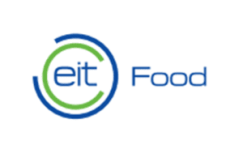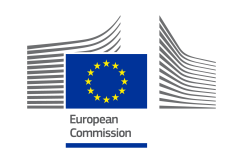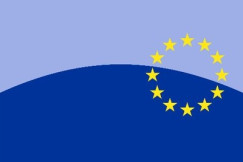Programmes
16 June 2025
European Regional Development Fund (ERDF) & European Structural and Investment Funds (ESIF)
Programmes
16 June 2025
1. Healthy, balanced and sustainable diets for all European consumers
2. Prevention and reduction of food loss and waste
3. A climate - neutral food chain in Europe by 2050
+4 more
Login / create an account to be able to react
-
1 view

The European Regional Development Fund (ERDF) funds public and private bodies in all EU regions to reduce disparities. Τhe Fund supports investments through dedicated national or regional programmes.
Editorial team
European Commission - DG COMM
Topics
Albania
Armenia
Austria
Belgium
Bosnia and Herzegovina
Bulgaria
Croatia
Cyprus
Czechia
Denmark
Estonia
EU-27
Finland
France
Georgia
Germany
Greece
Hungary
Iceland
Ireland
Italy
Kosovo
Latvia
Liechtenstein
Lithuania
Luxembourg
Malta
Moldova
Montenegro
Netherlands
North Macedonia
Norway
Poland
Portugal
Romania
Serbia
Slovakia
Slovenia
Spain
Sweden
Switzerland
Türkiye
Ukraine
Other
Academic / Research and VET Institutions
Business Support Organisation
Company with 250 or more employees
Cluster Organisations
Consumer Organisations
Cultural and Heritage Organisations
Destination Management & Marketing Organisations
EU Institutions
Financial Institutions and Investors
Industry Associations and Chambers of Commerce
International Organisations
Local Authorities
Media / Journalist Organisations
National authorities
Networks and Federations / Confederations
NGOs / Non-profits
Notified Bodies
Regional Authorities
SMEs (a company with less than 250 employees)
Social Economy Entity
Trade Unions
Other
-
CoC aspirational objectives
-
-
1. Healthy, balanced and sustainable diets for all European consumers
-
2. Prevention and reduction of food loss and waste
-
3. A climate - neutral food chain in Europe by 2050
-
4. An optimised circular and resource-efficient food chain in Europe
-
5. Sustained, inclusive and sustainable economic growth, employment and decent work for all
-
6. Sustainable value creation in the European food supply chain through partnership
-
7. Sustainable sourcing in food supply chains
-
Share
The amounts funded are the following:
ERDF: € 226.05 billion (current prices)
ESIF: more than EUR 450 billion
ERDF: All regions and Member States will also concentrate at least 8% of their allocation on urban development, which will be delivered through local development partnerships using different tools. Operations under the ERDF are also expected to contribute 30% of the overall finance to climate objectives.
ESIF: ESIF funding is channelled through nationally and regionally tailored multiannual programmes, covering a wide array of thematic priorities and delivered through various financial instruments and grants. The ultimate project count depends on programme-specific selections by managing authorities within Member States, aiming to maximise cohesion, sustainable growth, and socio-economic development across Europe.
Responsible for the funding
ERDF (2012-2027):
European Commission: Sets overall guidelines and regulations for ERDF funding;
National & Regional Authorities: Select projects, manage funds, and oversee implementation at the local level;
Managing Authorities (MAs): Each country designates specific institutions to handle ERDF allocations and ensure compliance with EU policies.
ESIF:
Managing and allocating European Structural and Investment Funds (ESIF) primarily lies with the Member States, specifically through their designated “managing authorities.” These managing authorities operate under a framework of shared management between the European Commission and the Member States. The Commission approves the overall multiannual national and regional programmes, but the managing authorities within each Member State ultimately decide where, when, and how the funds are allocated at the project level. The managing authorities may delegate specific responsibilities to intermediate bodies. Additionally, technical assistance is offered at the programme and Commission level to support preparation, monitoring, evaluation, and administrative tasks necessary for effective implementation.
Important Note: ESIF's time span was 2014-2020; However, continual development and adaptation are not static or limited solely to this timeframe.
Although Member States have started implementing multiannual programmes within this period, the process is dynamic, reflecting feedback from stakeholders and lessons learned from concrete cases. This flexibility allows ESIF programmes to evolve, ensuring that emerging topics and investment needs, such as innovative infrastructure, sustainable development, digital transformation, and SME competitiveness, are progressively incorporated.
Financial conditions
ERDF: Based on their prosperity, all regions and Member States (MS) will concentrate support on a more competitive and smarter Europe (Policy Objective—PO1) and greener, low-carbon transitioning towards a net-zero carbon economy and resilient Europe (Policy Objective—PO2) through the mechanism known as 'thematic concentration'. All regions and Member States (MSs) will concentrate at least 30% of their allocation on PO 2 and:
More developed regions or MSs will dedicate at least 85% of their allocation to PO1 and PO2;
Transition regions or MSs at least 40% to PO1;
Less developed areas or MSs with at least 25% to PO1.
ESIF:
Managing authorities decide the allocation of funds and financial conditions based on approved multiannual programmes aligned with EU priorities such as research and innovation, SME competitiveness, a low-carbon economy, and social inclusion. For financial instruments under ESIF, eligibility and specific terms like loan duration, interest rates, and equity participation depend on ex-ante assessments and agreed strategies tailored to the target recipients and projects. The managing authorities contract with financial intermediaries who disburse loans, guarantees, or equity, typically setting terms appropriate to market conditions and policy objectives. National co-financing is an obligatory part of programmes and must comply with EU rules, including state aid regulations.
Loan durations, interest rates, and equity terms are therefore variable and determined on a case-by-case basis, in compliance with the Common Provisions Regulation (CPR) and other legal frameworks.
Financial entities
ERDF:
European Commission: Sets overall guidelines and regulations for ERDF funding;
National & Regional Authorities: Select projects, manage funds, and oversee implementation at the local level;
Managing Authorities (MAs): Each country designates specific institutions to handle ERDF allocations and ensure compliance with EU policies.
ESIF:
Managing and allocating European Structural and Investment Funds (ESIF) primarily lies with the Member States, specifically through their designated “managing authorities.”
These managing authorities operate under a framework of shared management between the European Commission and the Member States. The Commission approves the overall multiannual national and regional programmes. Still, the managing authorities within each Member State ultimately decide where, when, and how the funds are allocated at the project level. The managing authorities may delegate specific responsibilities to intermediate bodies. Additionally, technical assistance is offered at the programme and Commission level to support preparation, monitoring, evaluation, and administrative tasks necessary for effective implementation.
Related dates:
It is for development of all Member States. Specific calls for projects and deadlines for 2025 may vary depending on the country or region implementing the program.
Comments (0)
See also
-
12
EIT FOOD: Single Project Co-funding Opportunity (IMP-STR-2325-OC-01)
- Categories
- 2. Prevention and reduction of food loss and waste 3. A climate - neutral food chain in Europe by 2050 4. An optimised circular and resource-efficient food chain in Europe +3 more
-
1 view
Erasmus+
- Categories
- 2. Prevention and reduction of food loss and waste 3. A climate - neutral food chain in Europe by 2050 4. An optimised circular and resource-efficient food chain in Europe +3 more
-
1 view
Interreg – European Territorial Cooperation
- Categories
- 2. Prevention and reduction of food loss and waste 3. A climate - neutral food chain in Europe by 2050 4. An optimised circular and resource-efficient food chain in Europe +3 more




